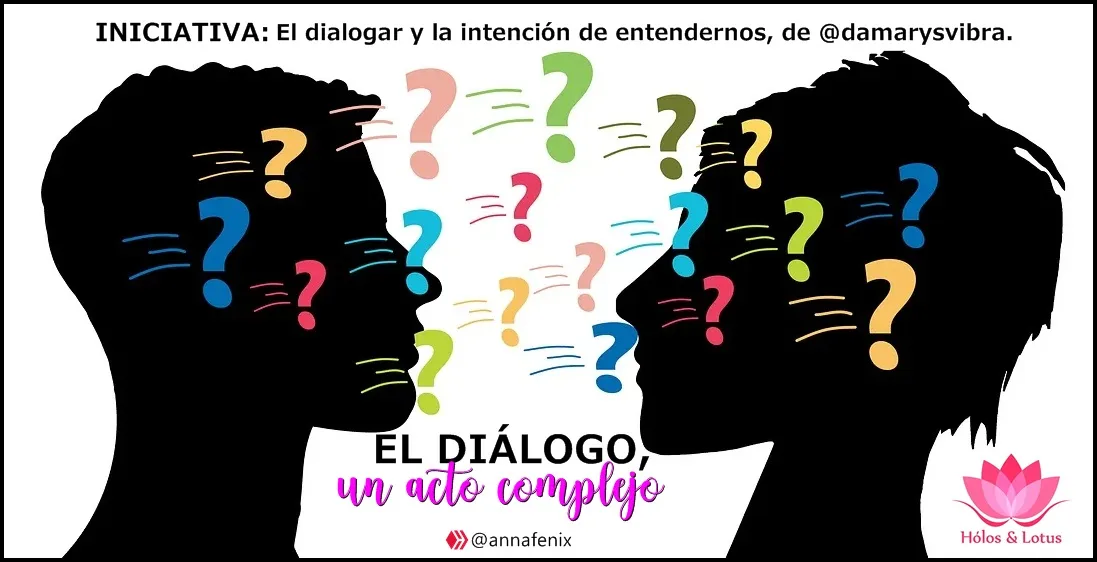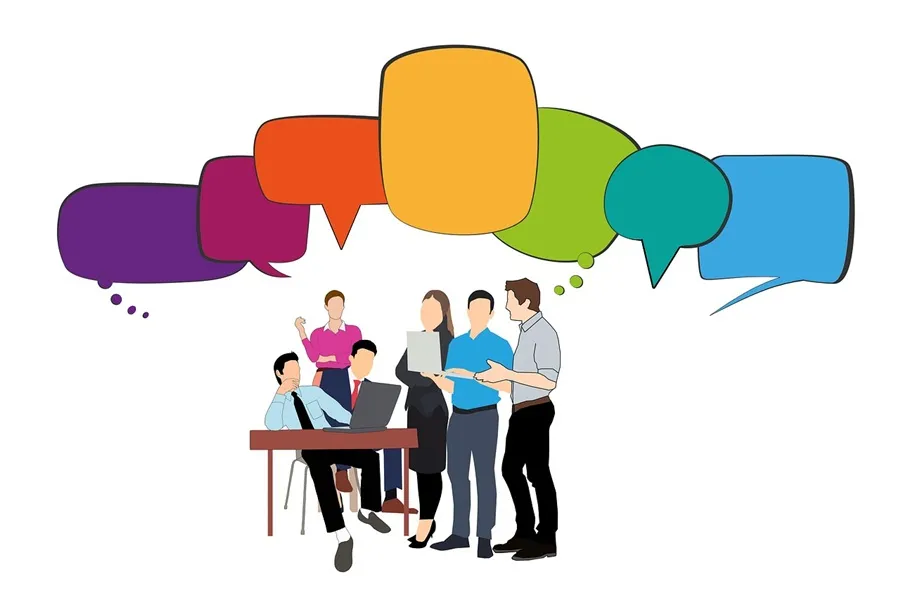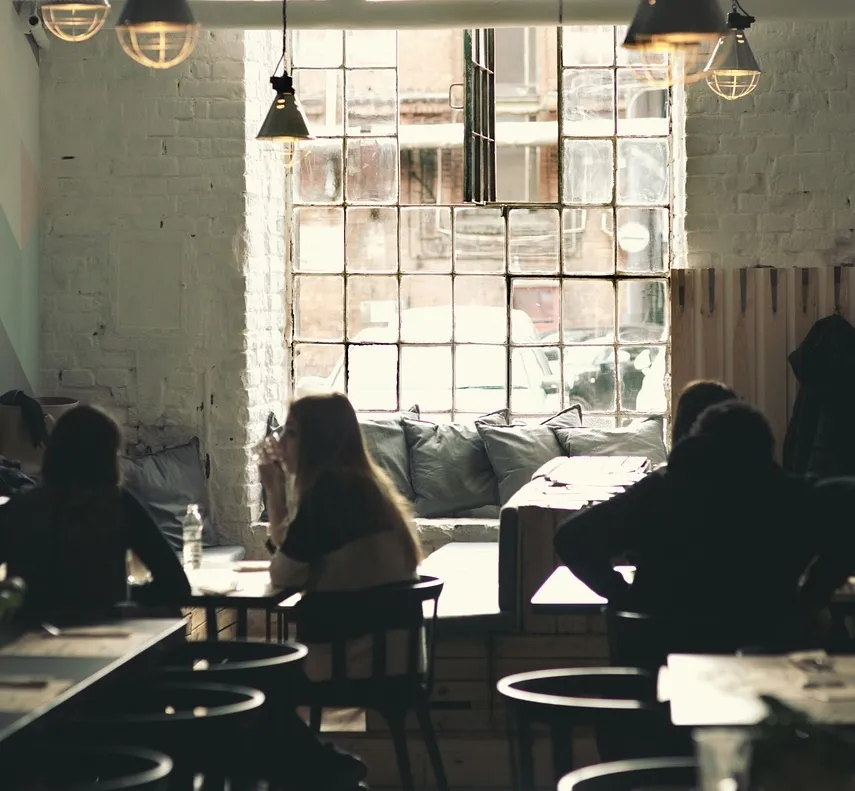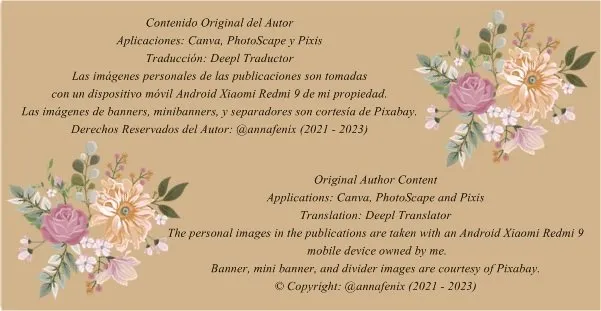

Saludos a todos, ésta es mi participación en la iniciativa de @damarysvibra para @holos-lotus, titulada: El dialogar y la intención de entendernos. Invito a participar a mis amigas @brujita18, @mercmarg, @belkyscabrera y @cirangela.
Greetings to all, this is my participation in @damarysvibra's initiative for @holos-lotus, entitled: Dialogue and the intention to understand each other I invite my friends @brujita18, @mercmarg, @belkyscabrera and @cirangela to participate.

Durante muchos años, la comunicación ha sido un elemento relevante en mi vida, desde lo familiar hasta lo educativo. Numerosas veces trabajé este tema durante mis estudios universitarios y me sentí atraída por las diversas asignaturas que lo abordaban; en ellas, obtuve mucha información importante acerca de su estructura y los conocimientos adquiridos, más la práctica diaria, ambos me permitieron transmitir con comodidad este valioso contenido durante muchos años escolares.
Pero cuando el tema tan conocido se aborda en situaciones cotidianas, las cosas no son iguales, ahora se ven desde otra perspectiva. Ya no es una extensa información acerca de cómo comunicarse y los elementos que intervienen en ésta, sino, cómo llevar a la práctica diaria el complejo fenómeno de la comunicación para hacer de ella un momento placentero, y digo complejo, porque ya no estaríamos tratando únicamente los elementos de una conversación; emisor, receptor, idioma, canal, etc, no, esto va más allá de esas partes protagónicas, se trata de emociones, estados de ánimo, capacidad receptora, tono de voz, entendimiento, comprensión, gestos, y un sinfín de detalles más que pueden modificar el panorama de la comunicación y convertirla en un proceso distorsionado.
For many years, communication has been a relevant element in my life, from family to education. Numerous times I worked on this topic during my university studies and I was attracted by the various subjects that dealt with it; in them, I obtained a lot of important information about its structure and the knowledge acquired, plus the daily practice, both allowed me to comfortably transmit this valuable content during many school years.
But when the well-known subject is approached in everyday situations, things are not the same, now they are seen from another perspective. It is no longer extensive information about how to communicate and the elements involved in it, but how to put into daily practice the complex phenomenon of communication to make it a pleasant moment, and I say complex, because we would no longer be dealing only with the elements of a conversation; No, this goes beyond these protagonist parts, it is about emotions, moods, receptive capacity, tone of voice, understanding, comprehension, gestures, and an endless number of other details that can modify the panorama of communication and turn it into a distorted process.

Nuestra amiga Damarys Vibra nos plantea una propuesta no sólo interesante, sino necesaria para la sana fluidez de la comunicación cotidiana; se trata del Diálogo Constructivo, porque desde que abrimos los ojos a un nuevo día, estamos en contacto directo o virtual con miles de personas que quizás no iniciaron el día con la misma tranquilidad y energía positiva nuestras, o viceversa, somos nosotros quienes no amanecemos con el buen ánimo de siempre… pero es imprescindible dialogar con ellos aún con el ánimo por el piso, para desarrollar las tareas de rutina, bien sea con los miembros de la familia como con los que se encuentran fuera de la casa, trabajo, mercado, vecinos, etc.
En mis tiempos de aula, cuando tenía que ir a trabajar y algo entorpecía el buen inicio del día, yo expresaba una frase antes de encontrarme con mis niños: “El problema se queda en casa guardado en la gaveta, y yo me cambio el uniforme por el de la maestra que siempre va a estar disponible para dialogar con ellos”. Y de esa manera lograba establecer una magnífica comunicación con ellos sin que nada ni nadie lo entorpeciera. Incluso, esos momentos se convertían en una terapia que me permitía recargar las baterías para tener más fuerzas y abordar el determinado problema al finalizar mi jornada laboral.
Our friend Damarys Vibra presents us with a proposal that is not only interesting, but necessary for the healthy flow of daily communication; it is about Constructive Dialogue, because from the moment we open our eyes to a new day, we are in direct or virtual contact with thousands of people who perhaps did not start the day with the same tranquility and positive energy as we did, or vice versa, we are the ones who do not wake up with the same good spirits as always? but it is essential to dialogue with them even when our spirits are low, in order to carry out routine tasks, either with family members or with those who are outside the house, work, market, neighbors, etc.
In my time in the classroom, when I had to go to work and something hindered the good start of the day, I would say a phrase before meeting with my children: "The problem stays at home in the drawer, and I change my uniform for the teacher's, who will always be available to talk to them "***. And in this way he managed to establish a magnificent communication with them without anything or anyone hindering him. Those moments even became a therapy that allowed me to recharge my batteries to have more strength to tackle the problem at the end of my working day.

La complejidad de la comunicación entre los seres humanos, se argumenta cuando cada parte de la mentada conversación, viene con su mezcla personal de emociones y situaciones. A todos nos gusta establecer a diario un diálogo cordial con nuestros semejantes, a miras de llegar a un acuerdo justo entre los participantes, pero no siempre se logran estos cometidos. Podemos poner en práctica esta disciplina constructiva, pero quizás el o los interlocutores no vienen con la misma idea, y en medio de una conversación respetuosa, nos pueden sorprender con una grosería, o con un tono elevado de voz, o simplemente, con una mala respuesta. Es aquí donde se pondría de manifiesto otro elemento más dentro de la comunicación, que son los valores, sobre todo el respeto, la tolerancia, la paciencia, y hasta la prudencia… porque hay que saber hasta dónde llegar, y en qué momento guardar silencio. Si la conversación no adquiere su curso normal, lo mejor es retirarse con educación, y evitar una incómoda discusión. Esto para mí ya se ha convertido en una práctica para toda la vida.
The complexity of communication between human beings is argued when each part of the aforementioned conversation comes with its personal mix of emotions and situations. We all like to establish a cordial dialogue with our fellow human beings on a daily basis, in order to reach a fair agreement between the participants, but this is not always achieved. We can put into practice this constructive discipline, but perhaps the interlocutor or interlocutors do not come with the same idea, and in the middle of a respectful conversation, they can surprise us with a rude or high tone of voice, or simply with a bad answer. It is here where another element within communication becomes evident, which are the values, especially respect, tolerance, patience, and even prudence... because you have to know how far to go, and at what moment to keep silent. If the conversation does not take its normal course, the best thing to do is to withdraw politely and avoid an uncomfortable discussion. This has become a lifelong practice for me.

Damarys nos plantea varias interrogantes en la iniciativa, con el fin de conocer nuestra visión sobre el “Diálogo Constructivo”.
¿Acostumbras a ponerlo en práctica?
Sí, en la medida de lo posible. La mayoría del tiempo lo practico, pero a veces las emociones y el estado de ánimo no me permiten tener toda la tolerancia y paciencia posibles para sobrellevar la tormenta de palabras de algunos interlocutores. Por eso, desde hace un tiempo, cuando no logro controlar la situación, por mi salud mental y emocional, hago una pausa en el diálogo, y me retiro hasta que los ánimos estén más tranquilos y en óptimas condiciones para establecer nuevamente la comunicación con esa persona.
Damarys asks us several questions in the initiative, in order to know our vision of "Constructive Dialogue".
Do you usually put it into practice?
Yes, as much as possible. Most of the time I practice it, but sometimes my emotions and moods don't allow me to have all the tolerance and patience I can muster to deal with the storm of words from some of my interlocutors. That is why, for some time now, when I am unable to control the situation, for my mental and emotional health, I pause the dialogue and withdraw until the mood is calmer and in optimal conditions to establish communication with that person again.

¿Te resulta fácil dialogar con la sana intención de comprender al otro para llegar a un entendimiento mutuo?
No siempre, creo que no es fácil para nadie, aparte, tengo un carácter un poco fuerte pero hago mi mejor intento para lograrlo, y hoy en día, la mayoría de las veces ha sido positivo. Hoy en día, después de muchos diálogos inconclusos y comunicaciones cerradas en el pasado, he aprendido a escuchar con paciencia, esperar el momento oportuno para expresar mis ideas, poner en práctica la tolerancia para que la comunicación no se cierre, y sobre todo, he desarrollado la empatía en todos los sentidos posibles para analizar y comprender la situación de la otra persona, y de esa manera entenderla y aportarle ideas que le sean de ayuda, o satisfactorias para ambos. Hago énfasis, en que hace un tiempo no lograba este nivel de empatía, y mi paciencia ya sobrepasados los límites, me conllevaba a cerrar el diálogo en franca discusión.
¿Qué estrategias te han resultado positivas a la hora de comunicarte efectivamente?
Tengo varias, dependiendo del escenario donde se establezca la comunicación:
-Serenarme, esto implica que ya no inicio un diálogo para resolver un determinado problema, hasta que me haya calmado.
-Cierro los ojos y respiro profundo cuando me dirijo a un diálogo donde se abordarán temas delicados, eso me relaja muchísimo.
-Contar hasta 10, y si es necesario, hasta donde se pueda, antes de expresar algo indebido… suena exagerado, pero creo que entienden el contexto.
-Ahora practico la paciencia y la tolerancia en todo momento.
-Soy empática antes de iniciar un diálogo, y analizo la situación de mi interlocutor para comprender su estado de ánimo, y usar las palabras adecuadas para darle fluidez al proceso.
-Selecciono las expresiones adecuadas, porque a veces hay términos que se malinterpretan y pueden resultar hirientes o incitadores, sobre todo si el diálogo es virtual.
-Uso un tono de voz adecuado, suave, pausado, ya que al elevarlo, el contexto de la comunicación puede convertirse en un campo de batalla.
-Hago pausas breves que me permiten pensar bien qué decir, antes de soltar una expresión inadecuada que entorpezca la fluidez de la conversación.
El diálogo constructivo nos permite no sólo llevar a buen término alguna diferencia, sino disfrutar de un intercambio de ideas que son necesarias para cualquier proceso comunicativo de calidad.
Do you find it easy to dialogue with the healthy intention of understanding the other person in order to reach a mutual understanding?
Not always, I think it is not easy for anyone, besides, I have a bit of a strong character but I try my best to achieve it, and today, most of the time it has been positive. Today, after many unfinished dialogues and closed communications in the past, I have learned to listen patiently, wait for the right moment to express my ideas, put into practice tolerance so that communication is not closed, and above all, I have developed empathy in every possible way to analyze and understand the situation of the other person, and thus understand and provide ideas that are helpful, or satisfactory for both. I emphasize that some time ago I did not achieve this level of empathy, and my patience, once my limits were exceeded, led me to close the dialogue in a frank discussion.
What strategies have been positive for you when communicating effectively?
I have several, depending on the scenario where communication is established:
-Serenate, this implies that I no longer initiate a dialogue to solve a given problem, until I have calmed down.
-I close my eyes and take a deep breath when I am addressing a dialogue where sensitive issues will be discussed, this relaxes me a lot.
-I count to 10, and if necessary, as far as I can, before expressing something inappropriate... it sounds exaggerated, but I think you understand the context.
-I now practice patience and tolerance at all times.
-I am empathetic before starting a dialogue, and I analyze my interlocutor's situation to understand his or her state of mind, and use the right words to make the process flow.
-I select the right expressions, because sometimes there are terms that are misunderstood and can be hurtful or inciting, especially if the dialogue is virtual.
-I use an appropriate tone of voice, soft, slow, because by raising it, the context of communication can become a battlefield.
-I take short pauses that allow me to think carefully about what to say before blurting out an inappropriate expression that hinders the flow of the conversation.
Constructive dialogue allows us not only to bring a difference to a successful conclusion, but also to enjoy an exchange of ideas that are necessary for any quality communicative process.

Fuente de las imágenes:
Imágenes cortesía de Pixabay - Imagen 1 // Hombre y mujer con signos de interrogación cortesía de Geralt
Imagen 2 - Pixabay // Estudiantes en comunicación cortesía de Sasint
Imagen 3 - Pixabay // Grupo equipo de retroalimentación cortesía de Geralt
Imagen 4 - Pixabay // Clásico restaurante con ventana cortesía de Kaboompics
El traductor utilizado es: Deepl Translator
Image source:
Images courtesy of Pixabay - Image 1 // Hombre y mujer con signos de interrogación cortesía de Geralt
Image 2 - Pixabay// Estudiantes en comunicación cortesía de Sasint
Image 3 - Pixabay // Grupo equipo de retroalimentación cortesía de Geralt
Image 4 - Pixabay // Clásico restaurante con ventana cortesía de Kaboompics
The translator used is: Deepl Translator


